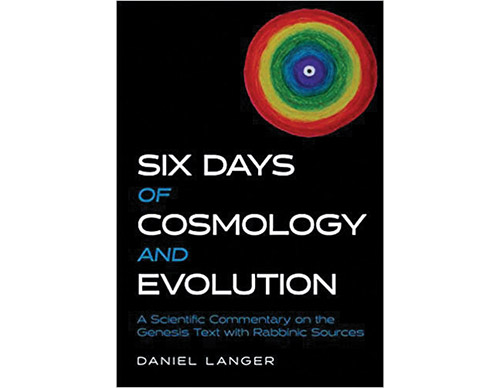
Reviewing: “Six Days of Cosmology and Evolution: A Scientific Commentary on the Genesis Text with Rabbinic Sources,” by Daniel Langer. KTAV Publishing House. 2018. English. Hardcover. 304 pages. ISBN-13: 978-1602803053.
In “The Lonely Man of Faith,” Rabbi Joseph Soloveitchik writes that he has never been seriously troubled by the problem of the Biblical doctrine of creation vis-à-vis the scientific story of evolution at both the cosmic and the organic levels. While it was not a problem for him, it can nonetheless be quite disconcerting for some people. For many others, the supposed scientific conflicts between the Chumash and modern science has them leaving the world of faith for the world of science.
But is there really such a conflict, or is it much ado about nothing? The reality is that it is indeed a most important topic that deserves attention. But the last time someone wrote that the creation story was a tad longer than 144 hours, all hell broke loose.
In “Six Days of Cosmology and Evolution: A Scientific Commentary on the Genesis Text with Rabbinic Sources” (Urim Publications 978-9655242720), Daniel Langer has written a most engaging and absorbing work. Langer is a retired New York City public school teacher, and in his book he makes the science and theology most readable.
As has been stated countless times, the Chumash is not a science book. Be it the creation story, the laws of kashrut and more, the function of the Biblical text is religious, not scientific. In the book, Langer refocuses the text and uses a scientific lens to understand how six days can be 15 billion years. Using this refraction, not only is there no contradiction, there is greater understanding and appreciation for the text itself.
Langer takes the same approach as authors such Gerald Schroeder, Rabbi Eli Munk, Natan Slifkin, Nathan Aviezer and many others to show that the Torah’s account of creation is absolutely not in conflict with the sciences of cosmology, geology or evolution. But to understand how there’s no conflict requires an understanding of the nature of time, the overlapping character of the six days of creation, and the use of homonyms in the Chumash. The use of homonyms creates a multiplicity of meaning in the creation and other Biblical stories.
In the book, Langer proceeds verse by verse through the first chapter in Genesis, and provides compelling reasons to assuage any problems. In each verse, he goes into detail to explain how the Biblical text is in harmony with the scientific approach.
Langer’s approach is somewhat similar to an observation made by Jeremy England (who ironically Langer never references), a physicist at the Massachusetts Institute of Technology. England notes that much of the conflict between science and theology is that of language. For example, England notes that biology and physics are different languages for talking about the world. There is no such thing as physics without measurement of physical quantities. But biology is inherently, at its inception, nonquantitative. But no one would ever say there is a conflict between biology and physics.
The chapter on the age of the universe is particularly interesting. So is the world 5,779 or 15 billions years old? Langer writes that both measurements are imprecise, as they are based on a premise of universal time, a single ubiquitous clock.
The book is a fascinating and enjoyable read. Langer is able to show that the so-called conflict between the Torah’s version of creation and the scientific account of creation are in truth the same story, albeit framed from different lenses.
In “God and the Astronomers,” astronomer and planetary physicist Robert Jastrow concludes that “for the scientist who has lived by his faith in the power of reason, the story ends like a bad dream. He has scaled the mountains of ignorance, he is about to conquer the highest peak; as he pulls himself over the final rock, he is greeted by a band of theologians who have been sitting there for centuries.”
Jastrow also said that “the curtain drawn over the mystery of creation will never be raised by human efforts, at least in the foreseeable future.” In “Six Days of Cosmology and Evolution,” Langer would surprise Jastrow, by raising that curtain quite a bit.
By Ben Rothke












